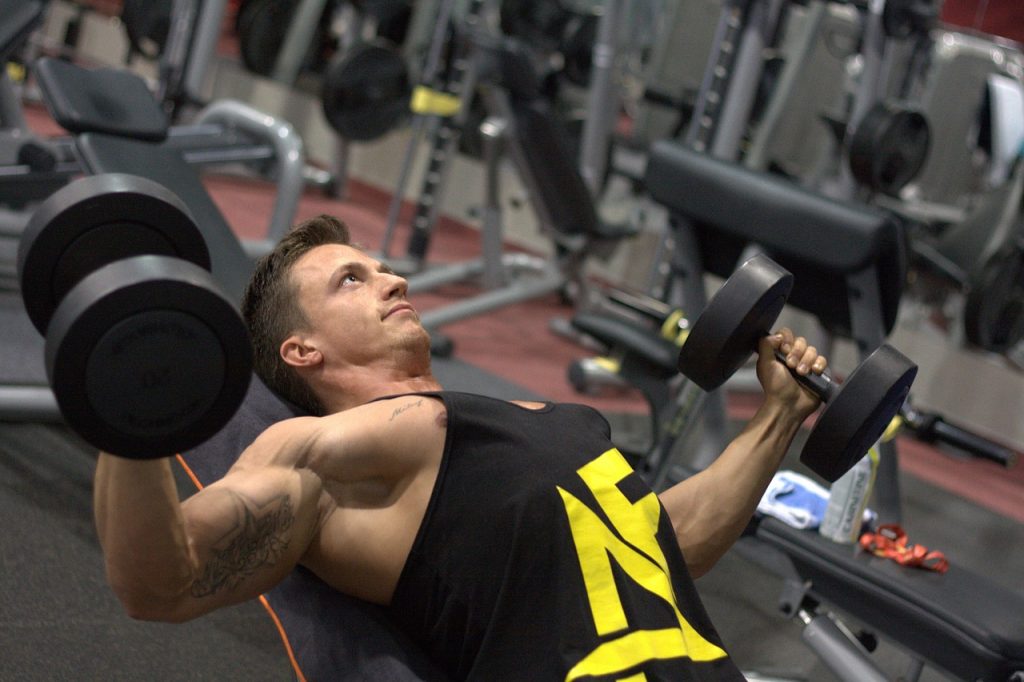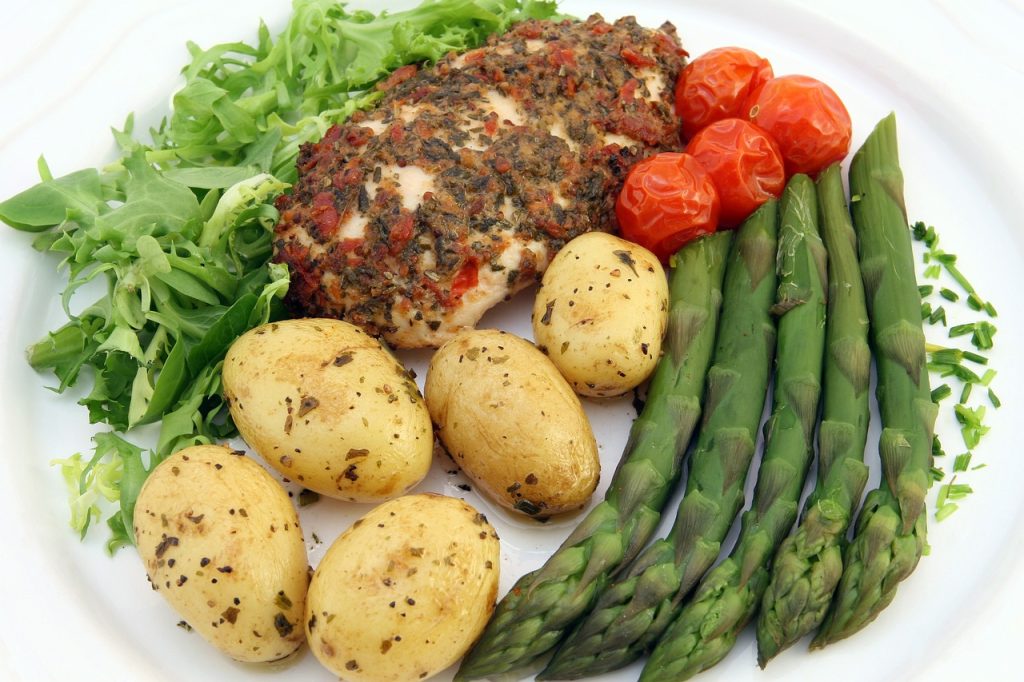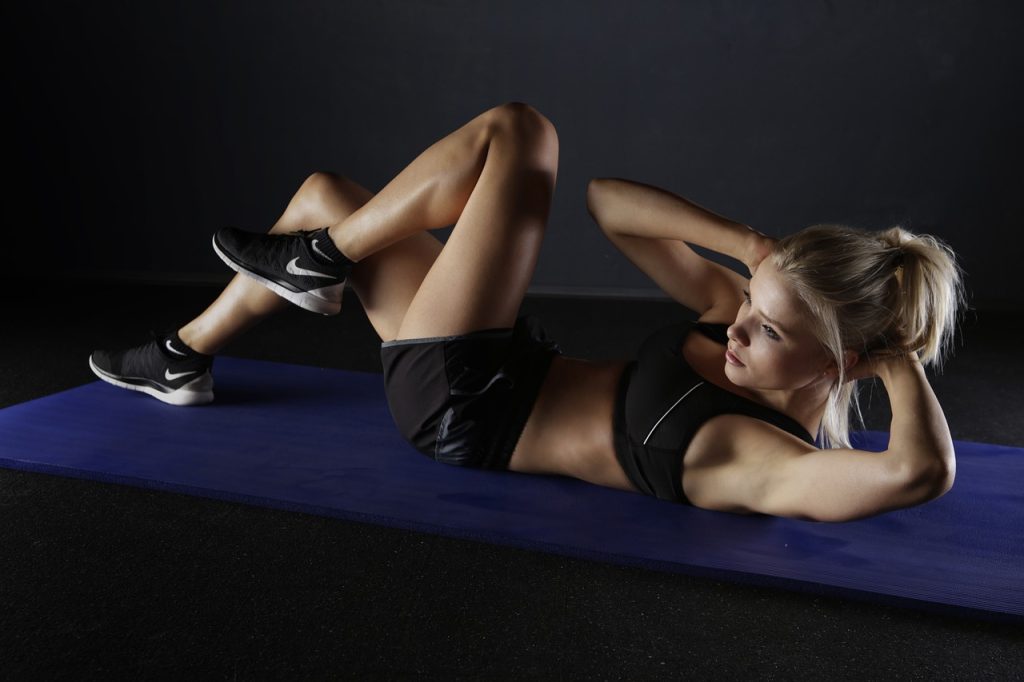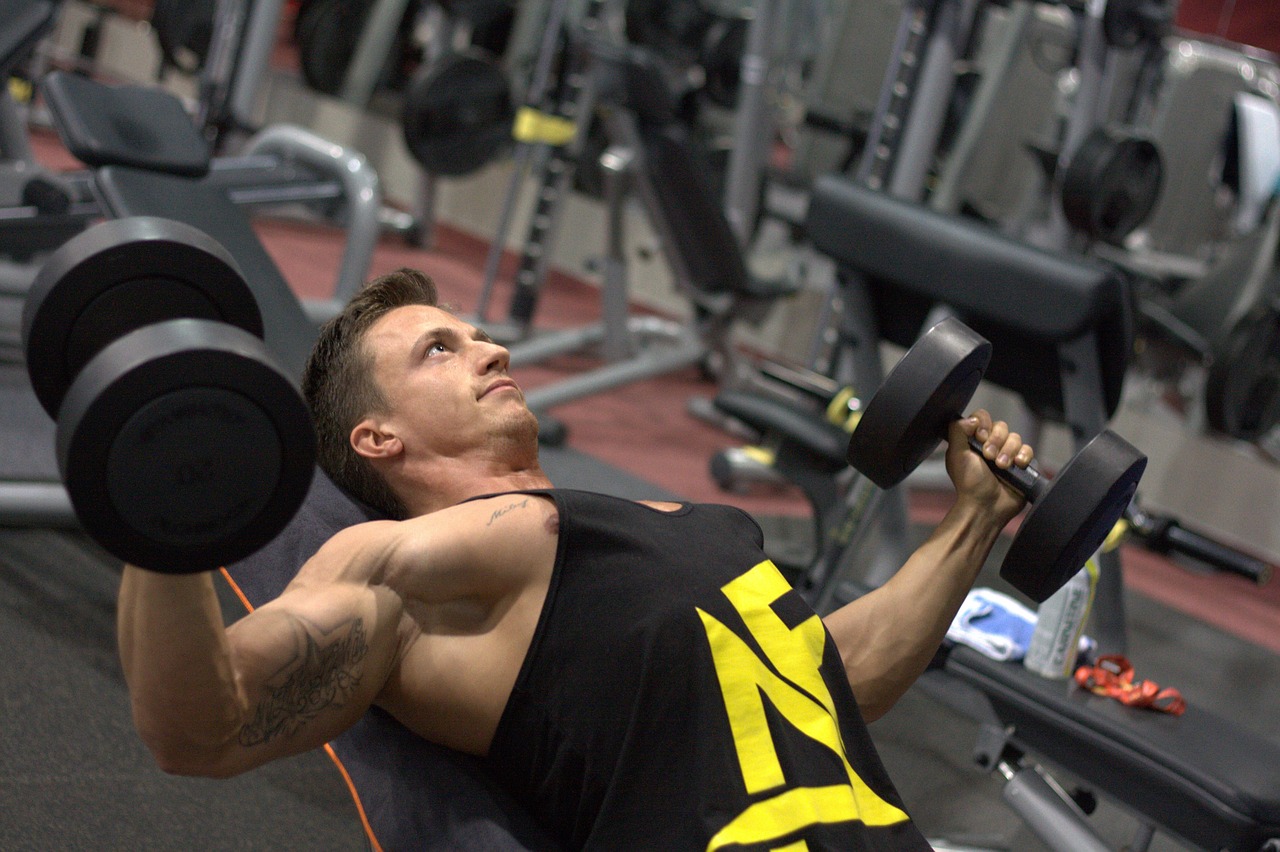
How does one exactly bulk up?
Bulking up is a process that involves increasing muscle mass and overall body weight. To bulk up effectively, one must focus on a combination of proper nutrition, consistent strength training, and adequate rest.
Nutrition plays a critical role in bulking up. It is essential to consume a surplus of calories to support muscle growth. This includes eating sufficient protein to repair and build muscles, carbohydrates for energy, and healthy fats for hormone production. A well-balanced diet with whole foods helps ensure the body has the nutrients it needs to recover and grow during the bulking phase.
Strength training is paramount in building muscle mass. Incorporating compound exercises such as squats, deadlifts, bench presses, rows, and overhead presses into your workout routine can target multiple muscle groups simultaneously, leading to efficient muscle growth. Progressive overload is key – gradually increasing the weight lifted over time to continually challenge your muscles.
Rest and recovery are often underestimated but are crucial for optimal muscle growth during bulking. Muscles grow and repair during periods of rest, so getting enough sleep each night (7-9 hours) is vital. Overtraining can hinder progress, so allowing muscles time to recover between workouts is essential for long-term success.
Consistency is key when it comes to bulking up. Establishing a regular workout routine and sticking to it will help you track your progress and stay motivated. Keep in mind that gaining significant muscle mass takes time and patience; results won’t happen overnight but with dedication and consistency.
Ultimately, bulking up successfully requires a holistic approach that combines proper nutrition, strategic training methods, ample rest, consistency in efforts, patience in seeing results over time while staying attuned to your body’s responses along the way.
Builds you a better physique and more strength

Bulking up not only enhances your physical appearance but also boosts your overall strength and endurance. By focusing on building muscle mass through a structured workout routine and proper nutrition, you can develop a stronger and more resilient physique.
Strength training, a fundamental component of bulking up, not only increases muscle size but also improves muscle strength. Compound exercises like squats, deadlifts, and bench presses engage multiple muscle groups simultaneously, leading to functional strength gains that translate into daily activities.
As you progress in your bulking journey, you’ll likely notice improvements in your strength levels. This increase in strength not only allows you to lift heavier weights during workouts but also carries over to everyday tasks such as carrying groceries, climbing stairs, or playing sports.
Aesthetically, bulking up can sculpt your body into a more defined and muscular form. This transformation can improve self-confidence and body image, leading to a greater sense of empowerment and pride in your physical accomplishments.
Overall, by embarking on a dedicated bulking journey aimed at enhancing muscle mass and strength gain through proper nutrition and targeted workouts, you’re not just transforming your body physically – you’re also improving your overall health, boosting confidence levels both inside and outside the gym, enhancing functional strength for daily activities, preventing injuries through improved structural support; ultimately fostering discipline and perseverance that benefit various aspects of your life.
Correct Diet

A well-structured diet is essential for effectively bulking up and building muscle mass. To support your training and growth goals, it’s crucial to consume a balanced intake of macronutrients (protein, carbohydrates, and fats) and micronutrients (vitamins and minerals). Protein plays a key role in muscle repair and growth. Including high-quality protein sources such as lean meats, poultry, fish, eggs, dairy products, legumes, and plant-based proteins like tofu and tempeh in your diet is crucial for meeting your daily protein requirements. Aim to spread out your protein intake throughout the day to support muscle recovery and synthesis. Carbohydrates are the body’s primary source of energy during workouts. Opt for complex carbohydrates such as whole grains, fruits, vegetables, and legumes to fuel your training sessions effectively. Consuming carbs before and after workouts can help replenish glycogen stores and support muscle growth.
Healthy fats are important for hormone production and overall health. Include sources of unsaturated fats like nuts, seeds, avocados, olive oil, and fatty fish in your diet to support cellular function and nutrient absorption. In addition to macronutrients, don’t overlook the importance of micronutrients in supporting overall health and performance. Consuming a variety of fruits and vegetables ensures you get essential vitamins (such as vitamin C, vitamin A) and minerals (like iron, calcium) that play vital roles in immune function, energy metabolism, and muscle contraction. Caloric intake is another critical factor when bulking up. To build muscle mass effectively without gaining excess fat, aim for a slight calorie surplus above your maintenance level. Tracking your food intake can help you ensure you’re consuming enough calories to support muscle growth while monitoring any changes in body composition.
Hydration is often overlooked but is crucial for performance and recovery. Adequate water intake helps maintain proper hydration levels during workouts and supports nutrient transport within the body.
Lastly I would advise consulting with a registered dietitian or nutritionist who specializes in sports nutrition to tailor a meal plan specific to your goals while considering any dietary restrictions or preferences you may have.
Top 10 best workouts you should be doing to bulk up
Bodyweight Squats
To effectively target and strengthen your quadriceps, hamstrings, and glutes while simultaneously enhancing lower body endurance and muscle stamina, consider incorporating bodyweight squats into your workout routine with a focus on higher repetitions. By performing sets of 20-30 reps per set, you can engage these major muscle groups to a greater extent, leading to improved overall leg strength and endurance.
Bodyweight squats are a versatile exercise that can be done anywhere without the need for special equipment. By utilizing proper form and technique, you can maximize the benefits of this compound movement. To perform a bodyweight squat, start by standing with your feet shoulder-width apart, engage your core for stability, and lower yourself by bending your knees while keeping your chest up and back straight. Ensure that your knees do not extend past your toes as you descend into the squat position. Push through your heels to return to the starting position, fully extending your hips and knees.
When aiming for higher rep ranges in bodyweight squats, it’s essential to maintain control throughout each repetition to fully engage the target muscles and avoid compromising form. Focus on controlled movements that emphasize the eccentric (lowering) and concentric (rising) phases of the squat for optimal muscle activation and growth.
By incorporating high-repetition bodyweight squats into your training regimen regularly, you can challenge your muscles in a different way than traditional strength-focused workouts. This approach not only helps develop muscular endurance but also contributes to overall lower body conditioning and functional strength. Remember to monitor your progress over time by gradually increasing repetitions or sets as needed to continue challenging yourself and promoting muscle growth effectively through this foundational exercise.
Push-Ups
Engage in push-ups using higher repetitions of 15-25 reps per set to effectively target and strengthen key upper body muscles, including the chest, shoulders, and triceps. This versatile bodyweight exercise not only helps build muscle mass but also enhances endurance and overall upper body strength.
To perform a push-up correctly, start in a plank position with your hands slightly wider than shoulder-width apart, ensuring that your body forms a straight line from head to heels. Lower your body by bending your elbows until your chest nearly touches the ground while keeping your core engaged for stability. Push through your palms to return to the starting position, fully extending your arms.
When focusing on higher rep ranges during push-ups, maintaining proper form is crucial to optimize muscle engagement and prevent injury. Emphasize controlled movements throughout each repetition, paying attention to both the lowering (eccentric) and raising (concentric) phases of the exercise.
By incorporating push-ups into your fitness routine with an emphasis on higher repetitions, you can challenge your upper body muscles in a unique way that promotes endurance and muscular stamina. This approach not only aids in developing functional strength but also contributes to enhanced muscle definition and tone across the targeted muscle groups.
Consistent practice of high-repetition push-ups can lead to increased muscle endurance and strength gains over time. Monitor your progress by gradually increasing sets or reps as needed to continue pushing yourself towards achieving new levels of fitness and performance through this fundamental bodyweight exercise. Remember that proper form, focus, and persistence are key factors in maximizing the benefits of push-ups for a well-rounded upper body workout.
Jump Squats
Integrate jump squats into your workout regimen with a focus on performing high repetitions of 15-20 reps per set to elevate your lower body training to new heights. Jump squats are a dynamic plyometric exercise that not only targets the quadriceps, hamstrings, and glutes but also boosts lower body power, explosiveness, and muscular endurance.
Executing a jump squat begins in a standing position with feet shoulder-width apart. Lower your body into a squat position by bending your knees and hips while keeping your chest up and back straight. Explosively extend your legs as you jump vertically off the ground, reaching maximum height before landing softly back into the squat position to complete one repetition.
By incorporating higher rep ranges into your jump squat routine, you can intensify the challenge on your lower body muscles while enhancing explosive strength and endurance. This fast-paced exercise not only helps develop muscle power but also refines coordination and agility through its dynamic movement pattern.
Maintaining proper form throughout each repetition is vital for optimizing the effectiveness of jump squats and reducing the risk of injury. Focus on engaging your core muscles for stability, landing softly to absorb impact, and ensuring fluid transitions between squats and jumps to promote efficient muscle engagement.
Consistent practice of high-repetition jump squats can lead to notable improvements in lower body explosiveness and endurance over time. Monitor your progress by adjusting intensity levels or increasing repetitions gradually as you strive towards advancing your athletic performance and achieving greater functional fitness through this challenging plyometric exercise.
Keep in mind that dedication, form integrity, and progressive overload are key elements in harnessing the full benefits of incorporating jump squats with higher reps into your training routine. Embrace the intensity of this explosive movement to elevate your lower body workouts, foster physical resilience, and unlock newfound levels of strength and power within yourself.
Pull-Ups
Execute pull-ups with an emphasis on higher repetitions, aiming for 10-15 reps per set. This exercise targets the back, biceps, and forearms, enhancing upper body strength and endurance. Focus on maintaining proper form, controlled movements, and full range of motion to maximize benefits and reduce injury risk. Consistent practice can lead to improved muscle engagement, posture, and overall upper body strength over time.
Walking Lunges
Incorporate walking lunges into your workout routine with either bodyweight or dumbbells, aiming for high repetitions of 20-30 per leg per set. This exercise targets the quadriceps, hamstrings, glutes, and calves while enhancing balance and stability. Focus on maintaining proper form throughout the movement, engaging core muscles for stability. Consistent practice can lead to increased leg strength, improved muscle endurance, and enhanced overall lower body function over time.
To perform walking lunges effectively, take a controlled step forward with one leg, lowering your hips until both knees are bent at a 90-degree angle. Keep your front knee aligned with your ankle and ensure your back knee hovers slightly above the ground. Push back up to the starting position using the heel of your front foot, engaging your glutes and quadriceps. Alternate legs for each repetition, focusing on a smooth, fluid motion to maximize muscle engagement and benefits. Remember to breathe steadily throughout the exercise and maintain proper posture to prevent injury and get the most out of this dynamic lower body workout.
Dips
Integrate dips into your workout routine with a focus on high repetitions (15-20 reps per set) to effectively engage the chest, shoulders, and triceps. By performing this bodyweight exercise consistently, you can enhance your upper body strength and endurance while targeting key muscle groups essential for overall upper body development.
Stretching downwards between parallel bars or using a dip station, lower your body until your elbows are at a 90-degree angle, keeping your back straight. Press back up through your palms to extend your arms fully, feeling the effort in your chest, shoulders, and triceps. Maintaining control and proper form throughout each repetition will optimize the benefits of dips by engaging the targeted muscles effectively. Consistent practice and gradual progression in reps can lead to noticeable improvements in both strength and muscular endurance in the upper body over time.
Jumping Jacks
Incorporate jumping jacks into your workout regimen with an emphasis on high repetitions lasting 30-60 seconds per set. This dynamic exercise is a fantastic way to elevate your heart rate, enhance cardiovascular endurance, and activate various muscle groups simultaneously.
Execute jumping jacks by starting in a standing position with feet together and hands by your sides. Simultaneously jump your feet out to the sides while raising your arms above your head, then return to the initial position swiftly. Focus on maintaining a steady rhythm and engaging your core throughout each repetition to maximize the cardiovascular benefits and calorie-burning potential of this versatile full-body exercise. By incorporating jumping jacks into your routine regularly, you can boost your overall fitness level while enjoying a fun and effective cardio workout.
Russian Twists

Engage your obliques and enhance rotational core strength by incorporating Russian twists into your workout routine. Aim for high repetitions of 20-30 reps per set using just your body weight or a medicine ball for added intensity. This exercise not only targets the side abdominal muscles but also helps improve overall core stability and endurance.
Russian twists are a dynamic way to sculpt your waistline and enhance your balance and coordination. By twisting the torso from side to side, you engage the oblique muscles effectively. Keep a steady pace and focus on quality form to maximize the benefits of this exercise. Incorporating Russian twists into your routine can lead to improved core strength, better posture, and increased stability in various daily activities or sports.
Bulgarian Split Squats
Including Bulgarian split squats in your workout routine can significantly benefit your lower body strength and muscle development. By engaging muscles like the quadriceps, hamstrings, and glutes, this exercise offers a comprehensive lower body workout that enhances not only strength but also balance and stability. Whether you opt for bodyweight variations or use dumbbells to increase resistance, focusing on high repetitions per leg amplifies the challenge, promoting muscle growth and endurance. This unilateral exercise not only hones specific muscle groups but also helps address any strength imbalances between your legs, contributing to a well-rounded lower body fitness regimen.
Bulgarian split squats are particularly effective in targeting the stabilizing muscles of the hips and core, fostering overall functional strength. This exercise not only aids in building muscle but also enhances balance and coordination, vital for various daily activities and athletic performance. By incorporating high reps per leg into your workout routine, you can further boost muscular endurance and cardiovascular fitness while promoting symmetry and stability in your lower body. Whether you are a beginner looking to build a solid foundation or an experienced athlete seeking to intensify your training, Bulgarian split squats offer a versatile and challenging option for enhancing your lower body strength and overall fitness levels.
Plank
Improve your core strength and endurance by incorporating plank exercises into your fitness routine. By holding a plank position for longer durations, ideally aiming for 30-60 seconds per set, you can effectively target and strengthen the muscles in your core, including the abdominals, lower back, and shoulders. This exercise is not only great for building a strong foundation but also enhances overall muscular endurance in key areas essential for stability and proper posture during various activities.
Enhance your core strength and endurance with the challenging yet rewarding plank exercise. Whether you’re a beginner or a seasoned fitness enthusiast, incorporating planks into your workout regimen can work wonders for your core muscles. By holding a plank position for extended periods, ideally aiming for 30-60 seconds per set, you engage not only your abdominals but also target the often-neglected lower back and shoulder muscles. This full-body isometric exercise promotes overall stability and helps improve posture by strengthening key muscles essential for everyday activities and athletic performance.
Extra tip
When it comes to doing these workouts, make sure to gradually use more and more weight little by little as this will allow you to bulk up to the best of your abilities. By increasing weight by 10 every 15 days, it will allow you to maximize results when it comes to bulking.
Conclusion
In conclusion, incorporating these top 10 bulking workouts into your fitness routine can accelerate your muscle-building journey and bring you closer to your strength and size goals. Remember, consistency is key when it comes to bulking up, so stay dedicated, fuel your body with the right nutrients, and push yourself during each workout session. By combining these effective exercises with proper nutrition and adequate rest, you’ll be on track to achieve noticeable gains in muscle mass and overall strength. Embrace the challenge, stay focused on your objectives, and watch as your hard work transforms into tangible results that showcase the power of dedication and determination in the realm of fitness and body transformation.
Thank you for reading this article!! I hope this article was helpful While your at it check out the Marcy 200 lbs Stack Weight Review

